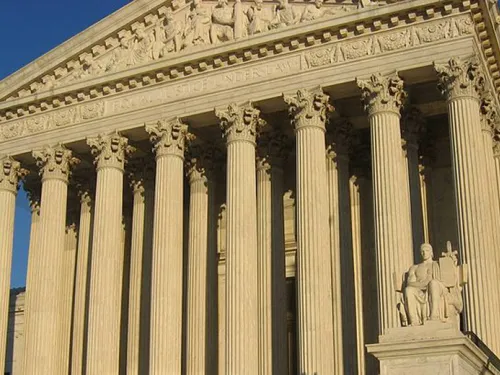by: Oren Segal
January 03, 2016
Armed anti-government activists associated with militia groups and other right-wing extremist movements seized control of the headquarters building for the Malheur National Wildlife Refuge on January 2, 2016, precipitating what is, in effect, an armed standoff with the federal government.
Though some sort of confrontation between militia activists and the federal government in the Pacific Northwest has been brewing for months, the seizure itself is unusual and a new departure for anti-government extremists.
The action was taken because of anger over the situation of father and son ranchers in Harney County in southeast Oregon. The ranchers, Dwight Hammond, Jr., and Steven Hammond, were convicted of arson for setting fire to around 130 acres of federal land, but were given light sentences. An appellate court ruled that their sentences were too short and mandated new sentences of 4-5 years. They were ordered to report to federal prison on January 4.
Many people were sympathetic to the perceived plight of the Hammonds, but it was right-wing anti-government extremists in particular who adopted the ranchers as a cause célèbre, using them to mobilize anger at the government. Their “adoption” of the Hammonds was hardly surprising, as militia groups, Oath Keepers, Three Percenters and other anti-government extremists have actively been seeking confrontations with the federal government for more than a year now, thanks to the Cliven Bundy standoff of 2014.
Cliven Bundy is a Nevada rancher who got into trouble with the Bureau of Land Management for grazing his cattle on federal land without proper permits. In March 2014, the BLM began to remove Bundy’s cattle from federal land but were stopped by a group of armed protesters. This precipitated the standoff, in which right-wing extremists from around the country made their way to the Bundy ranch to “protect” Cliven Bundy and his property from the federal government. Bundy, who shared some of their anti-government views, welcomed the support. During the standoff, armed extremists allegedly pointed weapons at federal and local law enforcement officers.
In the end, the federal government backed down and stopped the confiscation operation, leaving Bundy and his militia supporters to declare victory. The incident was viewed by the militia movement and related groups as a huge success and one that should be replicated elsewhere if possible.
Since the Bundy standoff, anti-government extremists have actively been seeking other future “Bundys” around which they could rally. Several of the prime candidates for future confrontations have been located in the Pacific Northwest. In particular, anti-government extremists have rallied in 2015 to “help” mine owners in Oregon (the Sugar Pine Mine near Merlin) and Montana (the White Hope Mine near Lincoln) who each had disputes with the federal government, causing many to fear the possibility of some sort of armed clash.
In the end, however, it was the Hammonds who ended up being the new “Bundys,” though they themselves do not appear to have supported or condoned the seizure of the federal building and have said they will report to prison as ordered. This does not seem to have deterred the activists, several of whom have direct ties to the Bundy standoff. Indeed, two of the people involved, Ammon and Ryan Bundy, are in fact sons of Cliven Bundy. Militia activist Ryan Payne of Montana is another veteran of the Bundy standoff allegedly involved in the seizure. Also prominent is Arizona extremist Jon Ritzheimer, who has recently organized anti-Muslim events and threatened to arrest elected officials.
But if some sort of clash was expected and if many of the players involved are familiar faces, what is definitely new is the specific tactic of seizing and holding the wildlife refuge headquarters.
Right-wing standoffs and confrontations with government or law enforcement overwhelmingly take one of two forms. The first is when extremists rally to “protect” perceived victims of government, such as people who face their home or land being seized for non-payment of taxes. The Bundy standoff is an example of such a confrontation, which takes place at the location of the perceived victim. The second is the typical “barricaded felon” situation in which an extremist who has committed a crime or is a fugitive has holed up somewhere and will not surrender. The Montana Freeman standoff of 1996 was such a confrontation.
In this case, however, right-wing extremists proactively seized and are holding a government building—a symbolic target. Such a tactic has historically been far more common with left-wing activists or extremists, including the seizure of many university buildings in the 1960s and 70s, as well as other locations or places, such as the takeover of Wounded Knee, South Dakota, in 1973.
Because this is a new tactic for anti-government extremists, it remains unclear how the scenario is likely to play itself out. But since the building they seized was empty at the time and there is no hostage situation, it is likely that federal authorities will be slow and deliberate in their response in order to minimize the possibility of violence.










